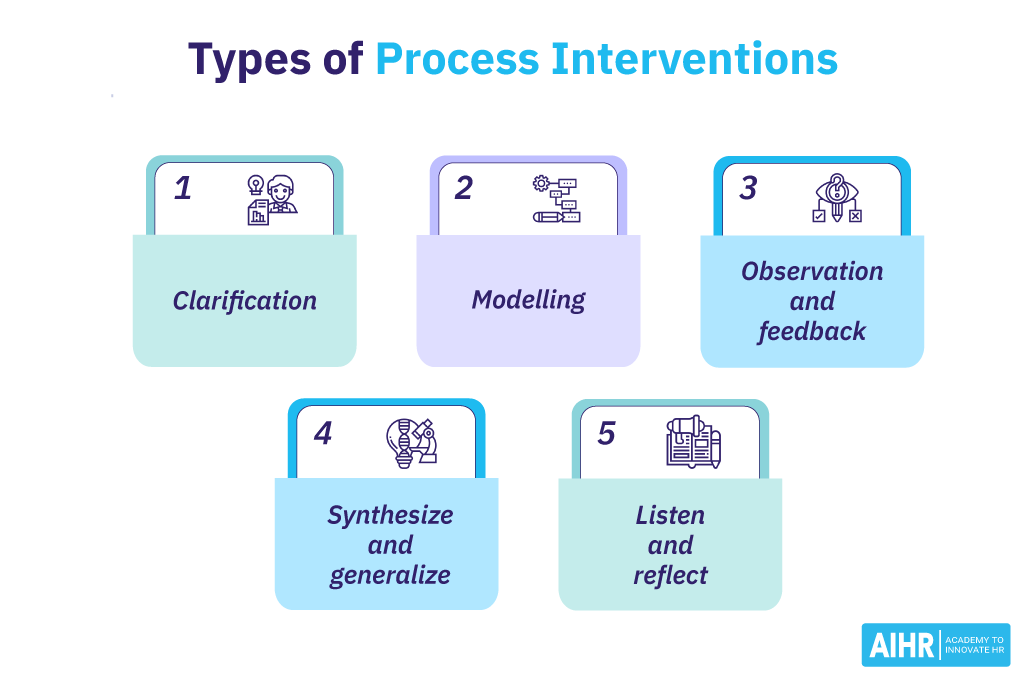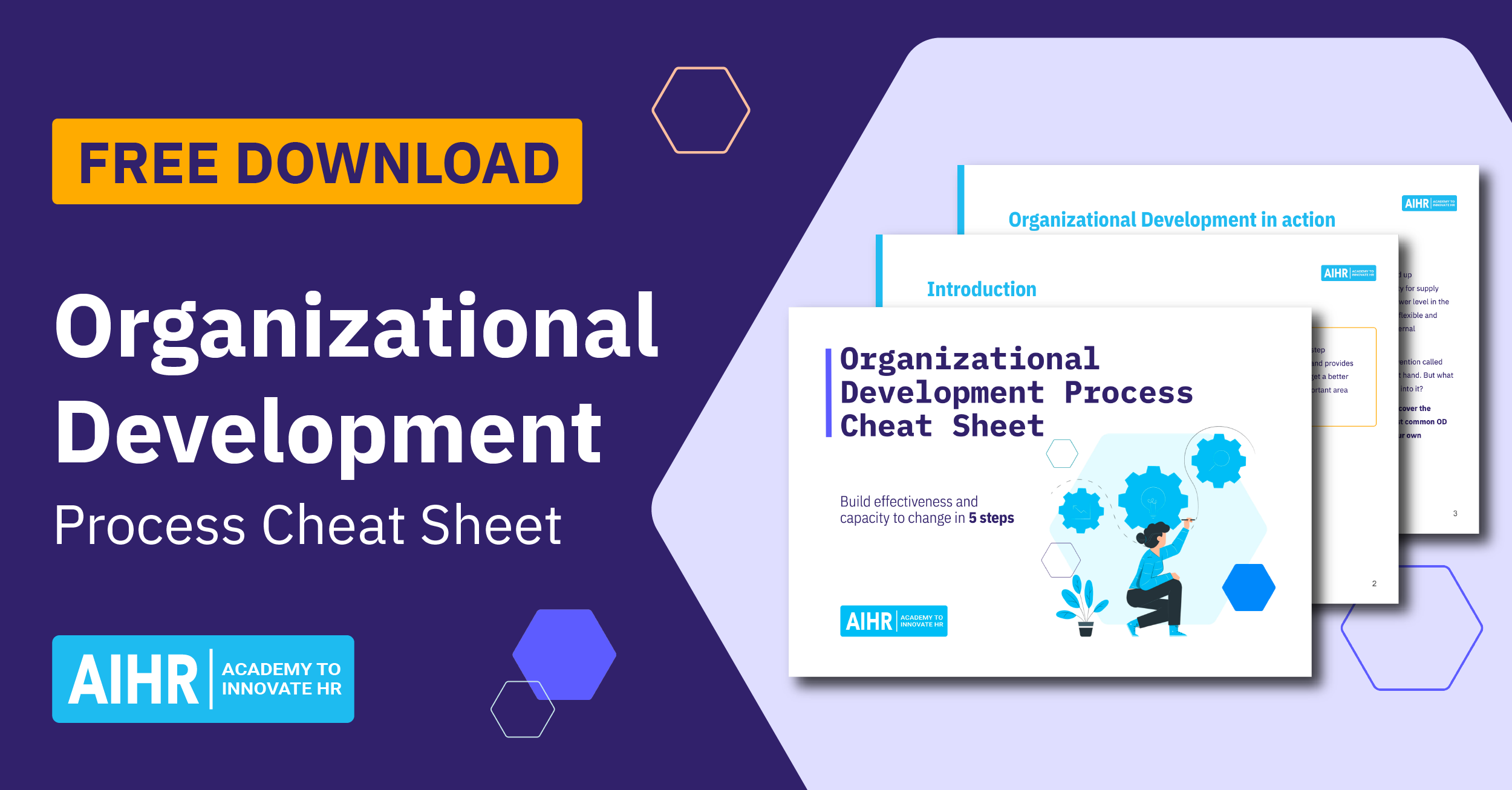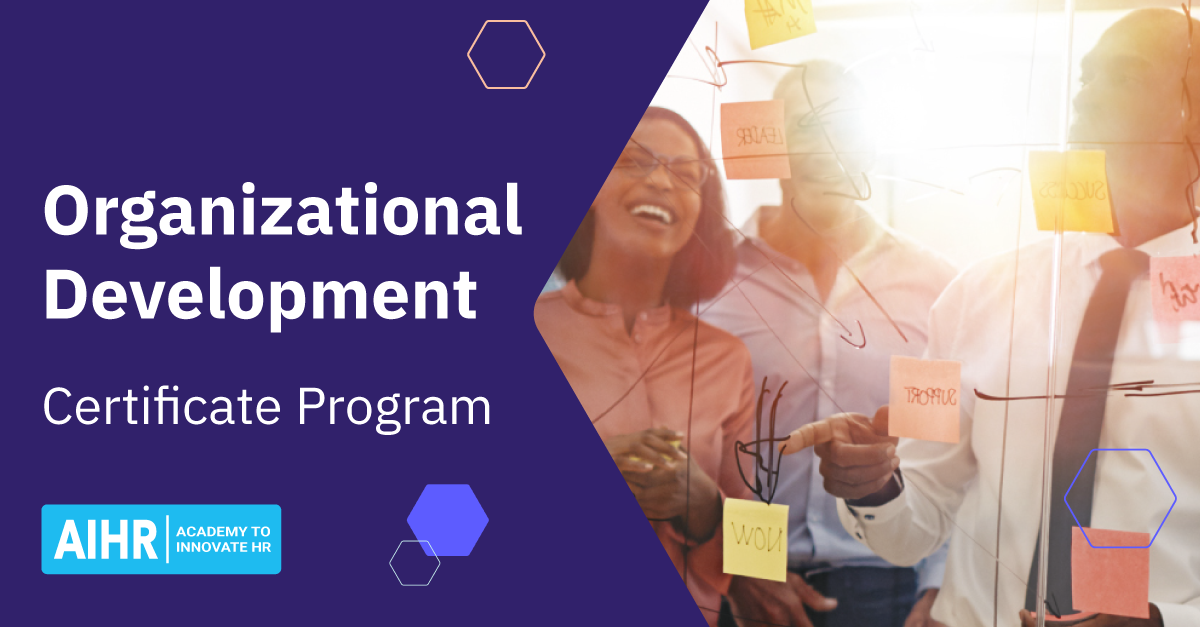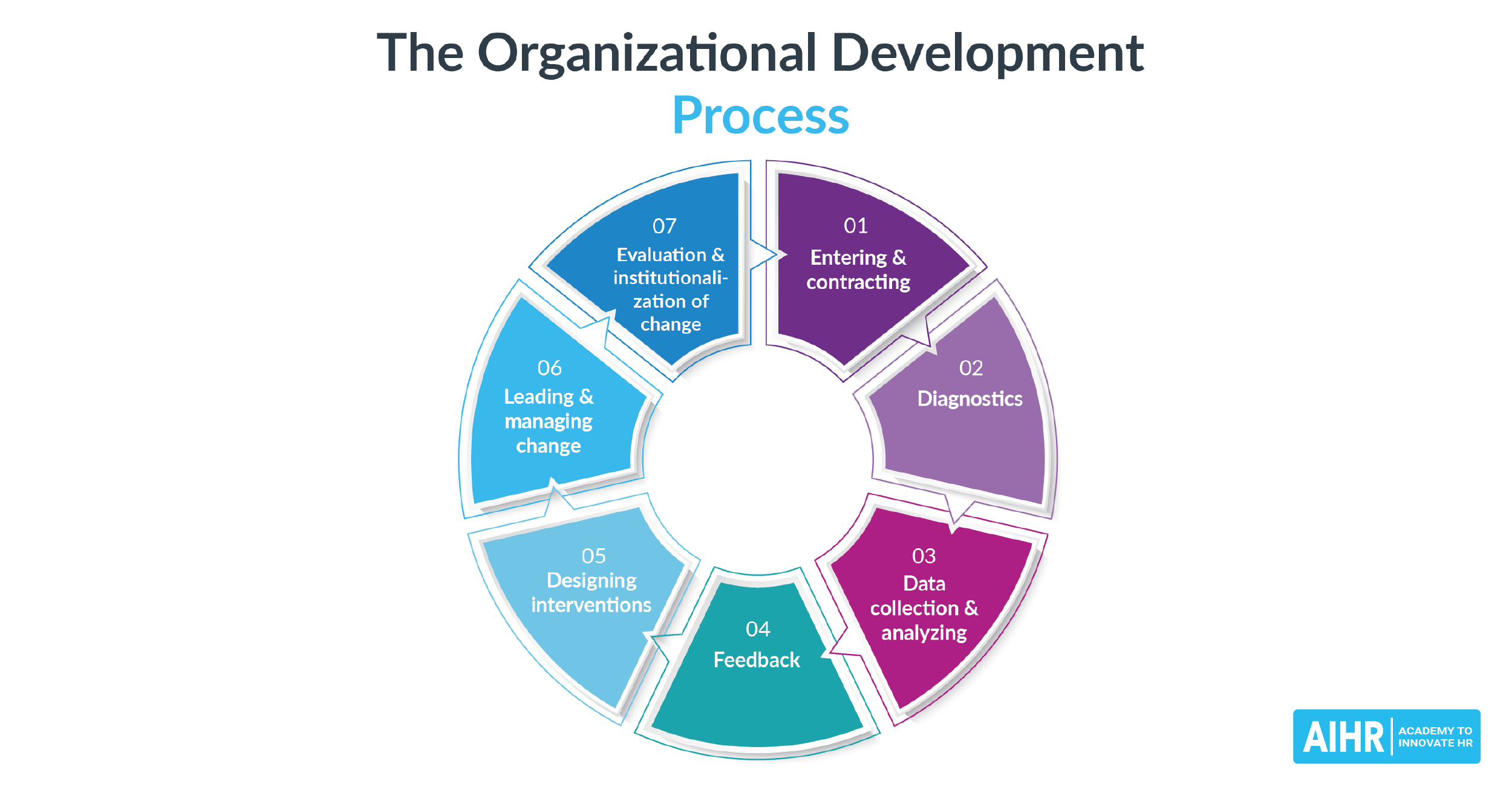Process Interventions
What are process interventions?
Process interventions are organizational development efforts that enhance a work group or team to perform effectively. Process intervention aims to help a group or team be more conscious of its processes and how it operates, and use the gathered knowledge to solve any challenges. Process intervention aims to make a workgroup understand the impacts of different authority issues and leadership styles.
The 5 types of process interventions
Process intervention focuses on how a team will accomplish the assigned work by providing minimum interruptions with maximum output.
Here are the different types of process interventions:

1. Clarification
Clarification is the resolution of any misunderstanding or perceptions among the group members. A workgroup or individuals needs to understand what is expected of them. Clarification can be achieved by providing group or individual note summaries of the expectations.
Clarifications enhance work group dynamics and productivity as members clearly understand which tasks to focus on.
2. Synthesize and generalize
These are organizational development intervention techniques that enhance work group cohesion. Team members can assimilate and process information in equal measures. It’s essential to have a workgroup spokesperson to present the team’s point of view. It’s the spokesperson’s role to organize the team’s ideas into a list (synthesizing) and compress the list into one or two points (generalizing) to enhance process improvement.
3. Listen and reflect
The listening process involves using eyes and ears to read an individual’s body language rather than the actual word.
Reflections enable individuals or groups to know that their statements are well heard and understood, driving the message home.
4. Modeling
Individuals learn and process information via different means. Modeling enhances process improvement by adopting audio, visuals, and kinetics to enable individuals or work groups to understand and practice what they have learned. Modeling ensures that managers sync with individuals or groups by practicing what is expected from a group or individual.
5. Observation and feedback
Observing a group and providing beneficial and appropriate feedback is essential when working to streamline process improvement to enhance organizational development. It’s vital to keep an eye on individuals, how they interact with a workgroup, and how they interact as a team.
How to develop a process intervention
Healthy interpersonal relationships in a group can enhance process improvement by adopting a trustworthy and open environment. It ensures that members can freely and openly express their thoughts and feelings to resolve conflicts under mutual understanding.
Here are ways an organization can develop process intervention:
1. Diagnostic activity
Diagnostic activity collects all pertinent information from the organization’s operational records, meetings, observations, and employee interviews to determine the organization’s health status.
The data is analyzed to design action plans communicated to members for process improvement. It also helps managers understand and improve relationships with employees.
2. Team building
Team building activities create bonds that enhance effectiveness amongst work group members. If an organization changes its mode of operations, issues are streamlined when group members are free to share problems.
3. Sensitivity training
Sensitivity training adopts unstructured group interaction to change trends to improve listing skills and increase tolerance. Workgroup members openly express their beliefs, attitudes, perceptions, and ideas to learn about interpersonal behaviors.
4. Intergroup bonding
Work teams face their challenges as different groups that are interdependent. Organizational development needs other teams or departments to operate in coordinated and synchronized ways without competition.
5. Process consultation
Managers need to understand and act on processes in an organization. These include communication patterns, leadership styles, decision-making, conflict resolutions, and cooperation methods in a group.







